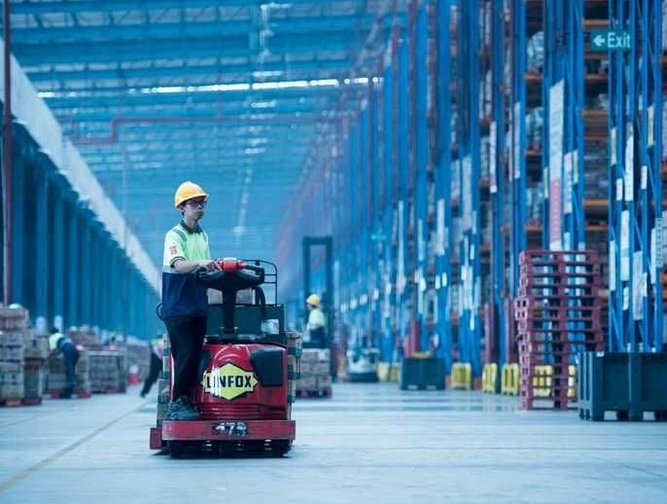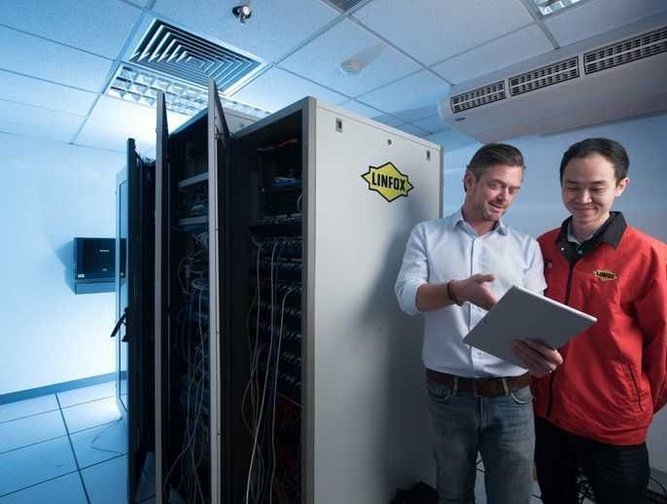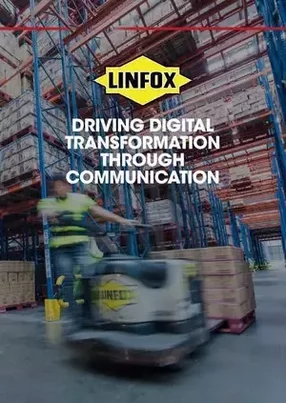Linfox International Group drives operational efficiency through digital transformation
Since its establishment in 1956 by Lindsay Fox, Linfox has become the leading provider of logistics and supply chain services to the Asia Pacific region’s largest companies. To maintain its advantage over the competition, Linfox has embraced disruptive technologies as a means to increase efficiency, reduce costs, boost transparency and trust, and drive customer satisfaction. “Digital transformation is not a threat, but an opportunity,” says Linfox’s Regional IT Manager, Edwin van Poelje, who is currently based in Bangkok. “Through digital transformation, we aim to understand company and customer processes more effectively, as well as capturing our digitised output on a central platform in combination with blockchain. Leveraging this data enables the company to report horizontally rather than by application or department, making the impacts of actions and decisions more visible.” He stresses that the journey is only as effective as the communication running through it. To that effect, Linfox has adopted an organisational approach to digitalisation that places cooperation and human interaction at the forefront of its journey.
“Implementing software is relatively simple. However, the change management process is key to making any implementation a success,” says Van Poelje, discussing the firm’s impact mitigation of the culture shift inherent in digital transformation. “The involvement of relevant users, training those users, and assuring and reassuring of the functionality, benefits and rationale behind the implementation are vital.” According to Van Poelje, Linfox has established change management as one of its key factors for aligning its digital solutions with its business needs, whilst ensuring that fears of replacement through automation are handled with care and sensitivity. Replacing staff with digital solutions, he adds, is not an aim of their implementation. Instead, automation enables workers to contribute to the business in other ways. “We use machine learning to automate and improve our reporting process on the Microsoft Azure platform. This is not meant to reduce our headcount; instead, it allows the team to focus on and action reporting outcomes, as well as supporting more elements of the business.” Alongside the possibilities for automation afforded by machine learning, Linfox has also begun to adopt artificial intelligence (AI) to assist with maintaining safety standards. “Our trucks have facial recognition software powered by AI that is capable of determining when a driver looks tired or is not complying with safety standards, prompting an alert to address the issue.”
Another key aim of the digital transformation is in minimising the firm’s regional hardware footprint, which is where the aforementioned Microsoft Azure platform comes into play. “Cloud technology is a key pillar in our digital strategy,” notes Van Poelje. Cloud technology not only enables Linfox to accelerate the time-to-market of its solutions and services, but also considerably boosts ease of access, scalability, budgeting and billing capabilities. “Reduction of hardware on-premise reduces the associated risks of hardware failure, performance and capacity constraints and backup,” says Van Poelje, adding that the strength of Linfox’s cybersecurity is facilitated by ensuring that the company’s cloud providers adhere to its strict cloud security standards for the benefit of users and customers. This alignment between Linfox and its suppliers is inherent across each of its vendor partnerships, with Van Poelje highlighting trust as the key factor in getting the best deal and service. “With our vendors we look for a long-term, trustful and worthy relationship,” he says. “As a family-owned company, our values are Loyalty, Integrity, Fairness and Trust. We seek to match these values with our vendors to ensure they are the best placed to assist us with achieving our digitalisation goals.”
“Microsoft is a key player for us,” continues Van Poelje. “We are standardising and centralising functionality on Azure wherever possible. For example, we have standardised our transport management system and warehouse management system, providing the standard for all services and solutions we offer internally and externally.” This functionality extends beyond cloud functionality and cybersecurity to data analysis, reporting and dashboarding. “All of our systems either run on Azure or channel data into our Azure data lake. From there, we can run reports and dashboarding, and allow access to users and customers at the point of need.” Linfox’s efforts to harness data through digitalisation does not end there, however. Digitalisation has enabled Linfox to reduce its paper usage, optimise processes and access to digital information, simultaneously generating usable data and identifying that which should be added to its blockchain network. “The benefit of blockchain is the transparency of information for customers regarding security, key performance indicators and finance,” explains Van Poelje. “The immutable principle of blockchain makes this trustworthy and secure. In combination with smart contracts, this will enable easy customer compliance and fulfilment.” Blockchain also ties Linfox’s ethos of open and collaborative communication together, providing a single source of truth for users across the organisation that can be relied upon to deliver the right information at the point of need.
The successes and benefits of Linfox’s digital transformation are plentiful. Assessing the key benefits of the journey for employees, van Poelje highlights ease of access as being a decisive factor in the success found through the application of new technologies. The time freed up by leveraging solutions that enable employees to access data quickly, easily and reliably is combined with the reduced labour afforded by automation of repetitive processes. This ability to apply time and skill more constructively not only boosts operational efficiency, but also job satisfaction. “For the organisation specifically, the key benefit is the visibility and transparency,” adds Van Poelje. “Our business intelligence environment gives a near real-time display for operations, departments and customers, which was not possible in the past.” Van Poelje also highlights the digitisation of the company’s safety process, particularly the frictionless manner in which it was enacted. “Instead of using paper, everyone is using online forms to report and communicate on safety aspects.
“In addition, I am proud of the Azure environment we have established. It has been setup in a flexible way to accommodate for future demand.” This future-proofing is the crux of Linfox’s powerful position as a leading digitised supply chain solutions provider. Van Poelje says that the next stage is to develop Linfox’s supply chain operations further, becoming a modular, dynamic and flexible service provider that is able to connect with and fulfil the needs of any customer. With the laudable successes achieved so far, this goal seems not only achievable, but inevitable.







- Comau's Automation Solutions for Outside of ManufacturingAI & Automation
- How Intelligent Automation is Reshaping ManufacturingSmart Manufacturing
- Optimising back-office operations with AI in manufacturingAI & Automation
- Panasonic Connect’s Autonomous Manufacturing SolutionsAI & Automation

